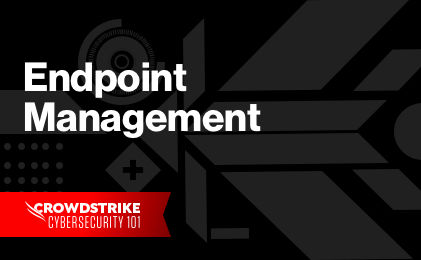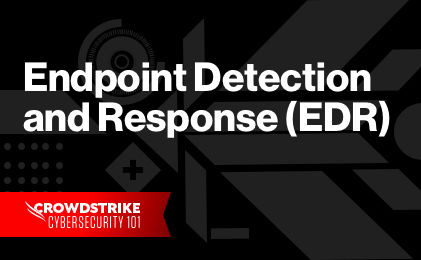An endpoint is any device that connects to a network, such as a computer, a smartphone, or an internet of things (IoT) device. Endpoints are gateways through which information flows — and also where potential threats can enter. Therefore, endpoint monitoring is an essential cybersecurity measure.
Endpoint monitoring is crucial because endpoints are often the first line of defense against cyber threats. They are the touchpoints where users interact with the network and where data is most vulnerable. When an organization proactively monitors its endpoints, it positions itself to detect, analyze, and respond to threats more effectively. This kind of proactive approach goes a long way toward preventing breaches. And in the case of an attack, it also helps minimize damages.
In this article, we’ll unpack endpoint monitoring, looking at its key components and processes. We’ll also consider challenges and implementation best practices. Let’s dive in.
What is endpoint monitoring?
Endpoint monitoring involves the continuous monitoring and management of devices that connect to a network, such as computers, mobile devices, and servers. As a critical piece of the cybersecurity puzzle, endpoint monitoring seeks to identify and mitigate threats at these network access points.
By monitoring these endpoints, organizations can detect unusual activities — such as unauthorized access or malware infections — ensuring that any potential security breaches are identified and addressed promptly.
Endpoint monitoring has developed significantly over the years. What started as basic antivirus software has evolved into sophisticated endpoint protection platforms (EPPs) and extended detection and response (XDR) systems. These advancements are a response to the increasing complexity of cyber threats and the rise of remote work and cloud services, which has directly led to the growing number of devices accessing networks.
Key components of endpoint monitoring
Endpoint detection and response (EDR) is a key part of modern endpoint monitoring. It focuses on real-time threat detection, analysis, and response. EDR systems are designed to identify suspicious activity on endpoints, providing detailed insights that enable rapid remediation of threats.
Another key component of endpoint monitoring is the EPP. This is a preventive layer deployed on the endpoint device that offers a range of security measures, such as antivirus protection, anti-malware protection, a firewall, and port control.
Finally, we have XDR, which integrates data from various security layers — including email, network, and cloud services — to inform endpoint monitoring and offer a more comprehensive approach to threat detection and response.
The process of endpoint monitoring
Endpoint monitoring is a structured process and is often tailored to the unique needs of each organization. Simplified for clarity, the steps are as follows:
- Deployment: Choose the appropriate setup for your organization. You might use agent-based systems (which are deployed directly on each endpoint) or agentless solutions that monitor activity strictly through the network.
- Threat detection: Identify potential threats through signature-based detection (for known threats) and behavior-based analysis (for new, unknown threats).
- Response and remediation: Execute established protocols for how to respond when a threat is detected. This may include automated responses for efficiency or manual intervention for complex threats.
- Continuous monitoring: Ensure the ongoing monitoring of endpoints to detect and respond to threats promptly while also adapting to new risks as they emerge.
Learn More
Watch our on-demand webcast to understand why extended detection and response (XDR) is quickly becoming a cornerstone of modern security operations:
Challenges in endpoint monitoring
Although endpoint monitoring is critical to cybersecurity, several challenges can hinder its effectiveness. Modern IT environments are diverse and dynamic, but new technologies and evolving threats are constantly reshaping the cybersecurity landscape. Against this backdrop, endpoint monitoring seeks to ensure the resilience of an organization’s network against cyber threats.
- Diversity of devices: A wide range of devices can connect to your organization’s networks. These devices rely on a range of operating systems and hardware. Ensuring consistent and effective monitoring across all these endpoints is a complex task.
- Volume of alerts: Endpoint monitoring systems may need to keep track of thousands of devices or more. The high number of alerts generated by these systems can lead to alert fatigue, and security teams may struggle to identify and prioritize genuine threats.
- Advanced persistent threats (APTs): An APT is a sophisticated, sustained cyberattack in which an intruder establishes an undetected presence in a network to steal sensitive data over a prolonged period of time. APTs pose a significant challenge, requiring advanced strategies and tools to detect and mitigate these stealthy and persistent threats.
Best practices for effective endpoint monitoring
Implementing endpoint monitoring effectively involves best practices that enhance the overall security posture of an organization. These practices are vital for maximizing the effectiveness of endpoint monitoring systems in counteracting threats.
- Regular updates and patch management: Keeping all systems and security software up to date is essential to protect against known vulnerabilities and emerging threats.
- Comprehensive policy development: Developing and enforcing robust security policies tailored to the organization’s specific needs helps maintain a secure and controlled IT environment.
- User training and awareness: Educating users about cybersecurity best practices and common threats increases the overall security awareness within the organization, making it harder for attackers to exploit human error.
- Integrating AI/machine learning (ML): Leveraging advanced technologies like AI/ML can significantly enhance threat detection capabilities, providing predictive analytics and more sophisticated threat analysis.
CrowdStrike Falcon Insight XDR: endpoint monitoring leveled up
Endpoint monitoring is essential for protecting network access points from diverse and sophisticated cyber threats. Despite the challenges posed by APTs and the wide range of devices connecting to organizations’ networks, adopting cybersecurity best practices can significantly strengthen an organization’s security posture.
CrowdStrike Falcon® Insight XDR offers a unified, AI-native platform for both EDR and XDR. It provides comprehensive visibility across your network’s attack surfaces, integrating data from your endpoints, your cloud environments, and your networks. Falcon Insight XDR keeps you ahead of adversaries by providing comprehensive, AI-native threat detection and response.
For more information about CrowdStrike Falcon Insight XDR, attend a hands-on workshop or contact us today.








